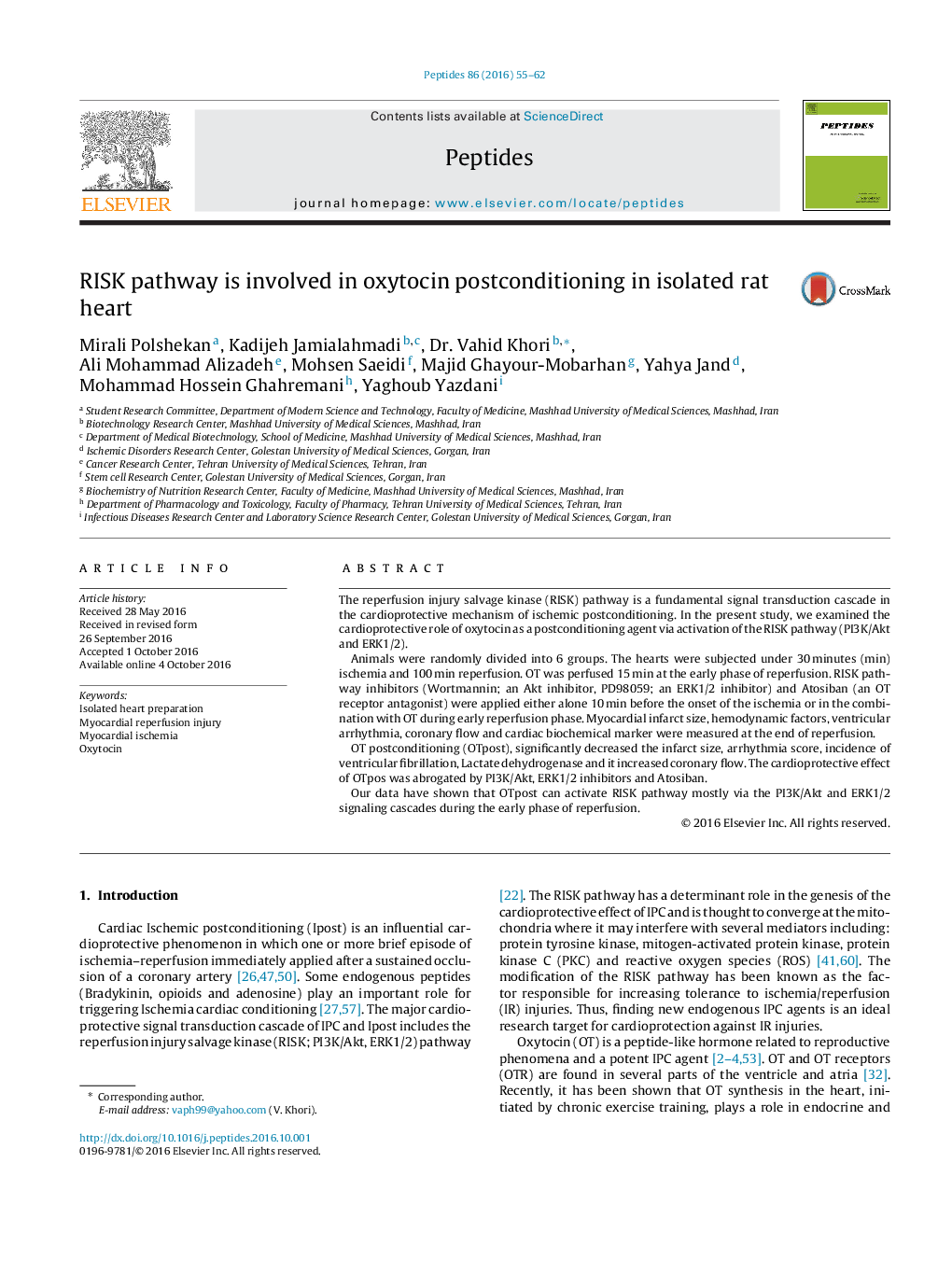| Article ID | Journal | Published Year | Pages | File Type |
|---|---|---|---|---|
| 5514732 | Peptides | 2016 | 8 Pages |
â¢Applying oxytocin at the reperfusion phase triggers protective signaling through RISK pathway against IR injury.â¢applying kinase inhibitors abrogated OT cardioprotective effect. Taken together, we concluded that oxytocin cardioprotection is induced via Akt and ERK1/2 signaling.â¢In the clinical setting of acute MI, oxytocin might be a good postconditioning agent.
The reperfusion injury salvage kinase (RISK) pathway is a fundamental signal transduction cascade in the cardioprotective mechanism of ischemic postconditioning. In the present study, we examined the cardioprotective role of oxytocin as a postconditioning agent via activation of the RISK pathway (PI3K/Akt and ERK1/2).Animals were randomly divided into 6 groups. The hearts were subjected under 30Â minutes (min) ischemia and 100Â min reperfusion. OT was perfused 15Â min at the early phase of reperfusion. RISK pathway inhibitors (Wortmannin; an Akt inhibitor, PD98059; an ERK1/2 inhibitor) and Atosiban (an OT receptor antagonist) were applied either alone 10Â min before the onset of the ischemia or in the combination with OT during early reperfusion phase. Myocardial infarct size, hemodynamic factors, ventricular arrhythmia, coronary flow and cardiac biochemical marker were measured at the end of reperfusion.OT postconditioning (OTpost), significantly decreased the infarct size, arrhythmia score, incidence of ventricular fibrillation, Lactate dehydrogenase and it increased coronary flow. The cardioprotective effect of OTpos was abrogated by PI3K/Akt, ERK1/2 inhibitors and Atosiban.Our data have shown that OTpost can activate RISK pathway mostly via the PI3K/Akt and ERK1/2 signaling cascades during the early phase of reperfusion.
